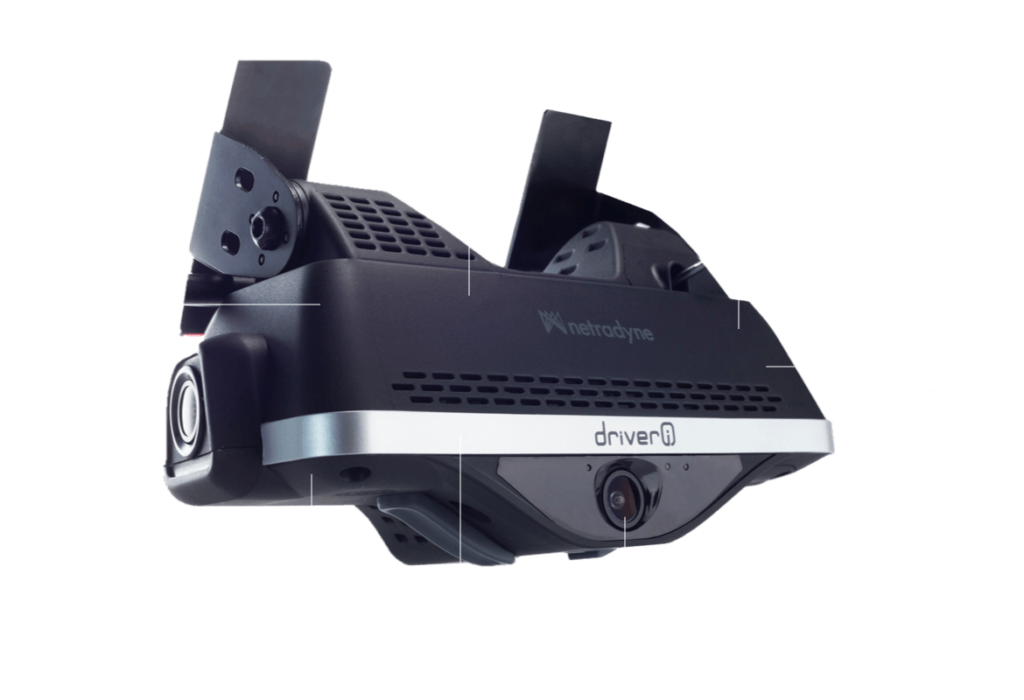Netradyne Expands Product Line with New Driveri D-210

Smaller form factor fleet safety device designed to fit in any class of vehicle and use vision-based cameras and edge computing to promote safer driving; providing flexible options for fleets
Netradyne, a leader in artificial intelligence (AI) and edge computing focusing on driver and fleet safety, today announced the expansion of its Driveri® product line with the introduction of Driveri D-210. The D-210 joins the flagship Driveri (now named D-410), a vision-based safety platform that combines artificial intelligence with video, advanced onboard sensors and edge computing to detect, reason and determine causality of events.
Designed with small and medium sized commercial vehicles in mind, the D-210 has a smaller form factor yet brings the same high performance and feature rich functionality of the D-410. With a 50 percent reduction in footprint, the D-210’s camera system consists of dual HD inward and outward cameras that support high quality video recording and real-time event playback. Drivers and fleet managers have access to their performance in real-time through a mobile application and can track events in the moment and after the fact for coaching. Driveri customers have access to straightforward reports that can be used as the basis for safety rewards and improved performance.
“With the smaller footprint afforded by the new dual HD camera system in the D-210, we can now support any class of commercial vehicle with our industry leading Driveri devices and the full stack Netradyne platform,” said Avneesh Agrawal, chief executive officer of Netradyne. “The D-210 builds on the strong feature set of our flagship D-410 and enables drivers and operators of any fleet or vehicle class size to achieve real impacts in safety, productivity, and efficiency, all while achieving cost savings thanks to reduced incidents and the critical video recording and data sets for reported events.”
Powered by edge computing AI, Netradyne’s Driveri platform leverages a camera system looking both within and outside the vehicle which continuously analyzes driving scenes and road data while monitoring a driver’s behavior using AI embedded directly into the edge computing device. It captures diverse roads and traffic scenarios such as commercial driveways, temporary road closures, frontage roads, school zones and more. To date, the system has recorded over three billion minutes and more than one billion miles of mapped driving, “seeing” events that legacy “trigger-based” camera systems would not.
Among the first customers to deploy the D-210 is Aioi Nissay Dowa Insurance Services USA (AIS), a full service insurtech insurance agency developing new data science-based products and services for the future of transportation and the on-demand mobility industry. “We evaluated many camera-based systems but we selected Netradyne based on the excellent AI-driven object detection and recognition that could also provide us with the precision-level data we need to assess driving risk and safety of a fleet vehicle in full context of the operating environment,” said Craig Lozofsky, chief operating officer at AIS. The company is in the process of deploying 300 units of the D-210 in a carshare fleet underscoring the variety of fleet vehicles and applications Netradyne can support with the D-210.
“When it comes to improving both overall business costs and road safety, AI based camera systems can protect every commercial vehicle regardless of class or miles driven,” said Adam Kahn, president, Fleet Business at Netradyne. “Whether you have a fleet of 5 or 5,000, increasing costs remain a challenge. A platform that uses a vision-based approach to collect and analyze data can help key stakeholders make sound decisions, mitigate costs and reduce risk while boosting fleet performance.”
Fleets using Driveri experience safety improvements immediately upon deployment, and many report building a culture of safety within their fleets as demonstrated by an average of 61 percent improvement in complying with STOP signs and 57 percent improvement in complying with traffic lights (based on cumulative Netradyne data over a two year period). Additionally, a 2019 analysis of 4,360 vehicles traveling a combined 350 million miles shows a 45 percent reduction in accident frequency over a six-month time period, resulting in significantly reduced claims costs.
Category: Accessories, Connected Fleet News, Driver Stuff, Fleet Tracking, General Update, News, Products, Safety, Tech Talk










